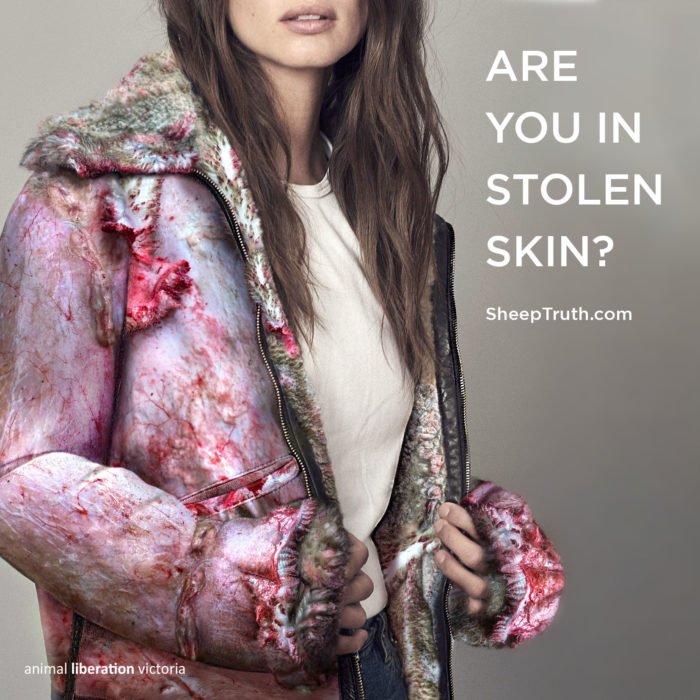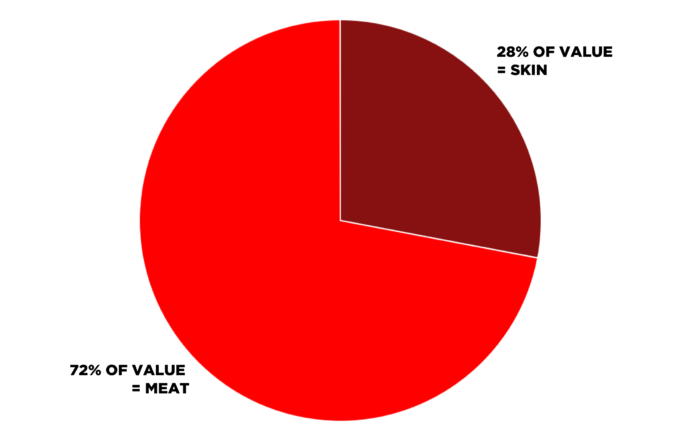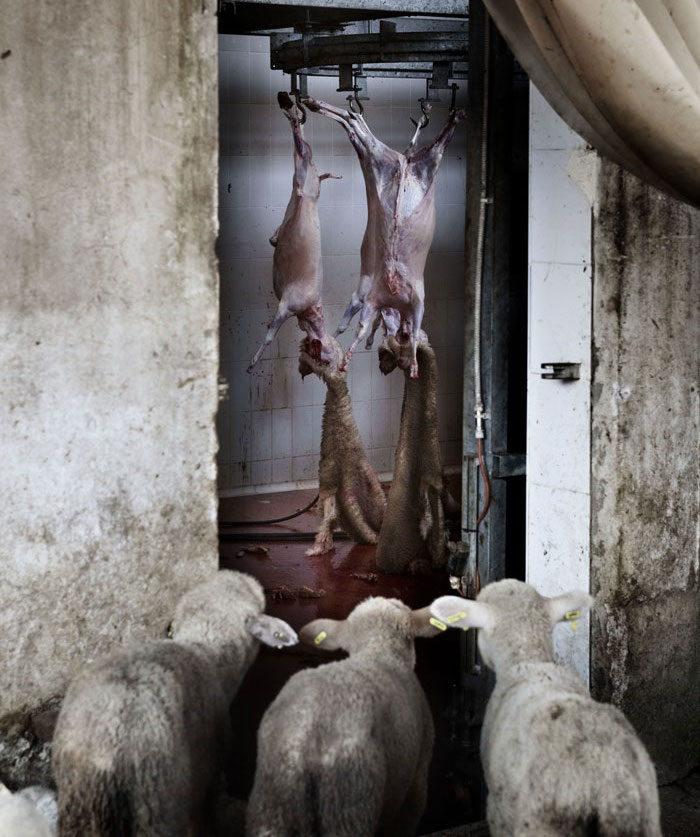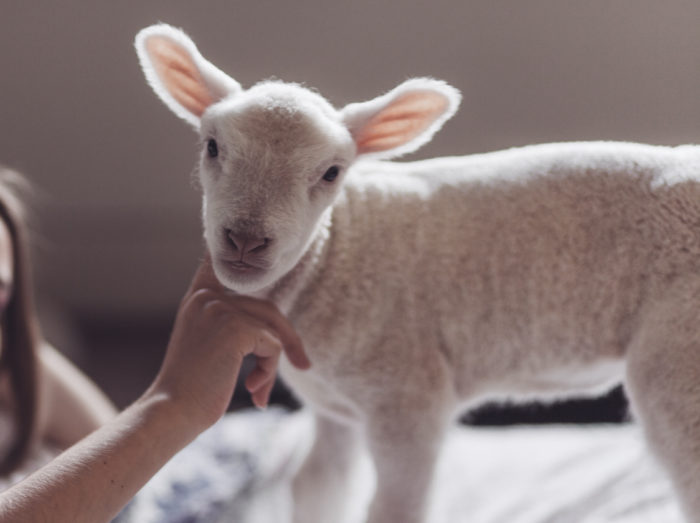Sheep Skins
Sheep skins are not a worthless by-product of the meat industry, but a highly profitable 'co-product'. When consumers buy skins, they fund the slaughter of sheep.

When lambs and sheep are ‘ready for slaughter’, it is generally for two reasons:
1 Lambs – Sheep raised in the meat industry are slaughtered at 6-8 months old for ‘lamb’ meat.
2 Sheep – Sheep no longer profiting wool farmers due to degrading wool quality are killed at 5-6 years old. Their flesh is sold as mutton.

The Harsh Reality
The following footage is from an Australian slaughterhouse. Sheep are electrically stunned and then bled out, following standard practice. When you purchase sheep wool or skin in any form, this is what will happen to the sheep.
CCTV footage by LEAKED of an Australian abattoir.
The Financial Incentive
In 2017, Australia exported more than $377 million worth of raw sheep and lamb skins.
Meat and Livestock Australia encourage farmers to “consider an appropriate shearing strategy to maximise wool and skin value” as these products are financially critical to the sheep industry.
Depending on the length of a sheep’s wool at the time of slaughter, it can be more profitable to shear lambs and sheep, sell their wool and then slaughter, or it can be more profitable to slaughter lambs and sheep with their wool on.
“Co-products such as skin, wool and hide can be an overlooked sector of the red meat industry”
– Meat and Livestock Australia
Sheep skins with more wool attached are more valuable, though both kinds of skin are sold and used.
A revenue breakdown of meat vs skin:
- Carcasses – Some of the largest available lamb carcasses are sold for $300.
- Wool lambskin – At the top end of the market, one large Australian long wool lambskin is sold for almost $120.
- Based on these numbers, the lambskin can account for approximately 28% of the financial value of the sheep at the point of sale.

Environmental Impact
Reports published by the Global Fashion Agenda found that even virgin synthetic materials are less harmful to the environment than wool to produce.
Sheep skin is even more environmentally damaging than wool, as the skin must also be tanned with chemicals.
Cow skin leather (the most common tanned hide available) was found by the same report, to be the number one most environmentally impactful material to produce.

The Power To Say No
We as consumers have the power to say ‘no’ to animal cruelty and slaughter, by buying animal-free alternatives. When we do, we create a world where sheep are free from harm.
“The fashion industry is particularly susceptible to influence from activist groups and, in recent years, we’ve seen big global brands move away from using leather products in favour of synthetic alternatives… this has had an effect on demand for hide…”
– Dennis King, executive officer of the Australian Hide, Skin and Leather Exporters Association

Related Articles
-
16 Reasons To Stop Wearing Wool
It's a common misconception that the wool industry is harmless, but that couldn't be further from the truth...
-
Rescue Stories
Meet some lucky winter lambs. Some saved from a freezing death in the cold, others from a lifetime of abuse by the wool industry, ending in slaughter when their lives are no longer considered profitable.
-
Dressing Vegan For The Planet
Animal agriculture is a leading cause of global warming, water usage, oceanic dead zones, land clearing, and species extinction. We save lives and the planet when we don't wear animals.
-
Aquaculture
The global production of farmed fish is experiencing rapid growth, with fish farms now supplying over 50% of the world's fish and shrimp consumed by humans.
-
The Easiest Way To Support ALV
Snap, write, share and donate - for free! You can raise $1USD for each review of vegan food or products to support ALV.
-
Kangaroos
The world's largest land-based wildlife slaughter is happening to Australia’s iconic kangaroos, considered a pest on the land they have lived in for over 20 million years.